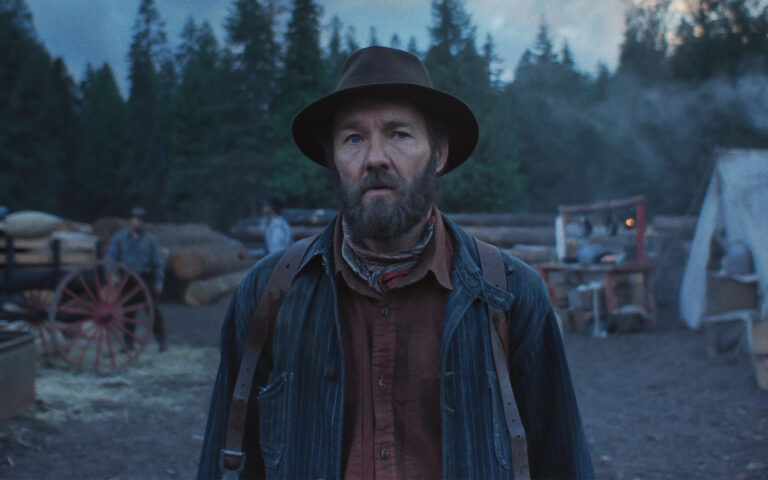As a musician, Stevie Salas has played with some big names: Mick Jagger, George Clinton, Justin Timberlake, among others. (You might also recognize his hands standing in for George Carlin’s during Carlin’s epic guitar solo in Bill and Ted’s Excellent Adventure, which Salas also contributed music for.) He ended up spinning those decades of experience into the documentary Rumble: The Indians Who Rocked the World, which went on to win a Special Jury Award at Sundance along with multiple Canadian Screen Awards.
But when it came to the issue of clean drinking water, the subject of Salas and his co-director James Burns’ latest documentary, Boil Alert, he was admittedly something of a novice.
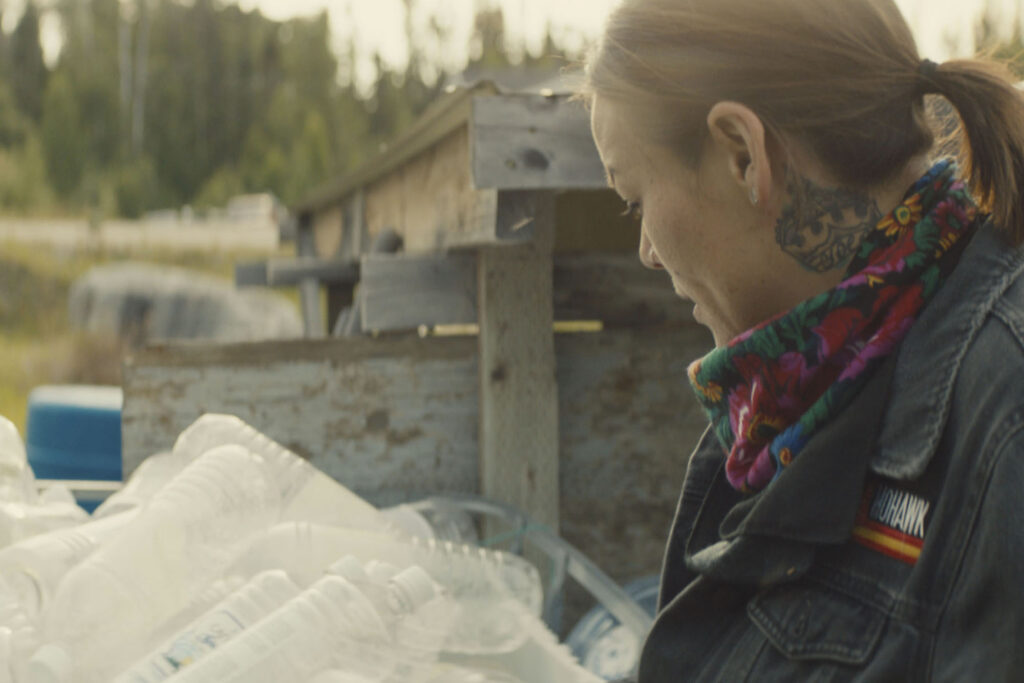
In the lead-up to Boil Alert’s Toronto International Film Festival premiere, Salas told SHARP he was first inspired to learn more about the subject after travelling to Fiji; he went with a friend who works for a non-profit that helps communities in developing countries access clean drinking water. After being shocked to learn there are over 1,100 communities in North America currently on boil-water advisories, Boil Alert was born.
The hybrid documentary follows activist Layla Staats as she sets out on her own journey of discovery, from Neskantaga First Nation, site of the longest-running boil-water advisory in Canada, to Wet’suwet’en, where she was arrested for taking part in the pipeline protests. Like Salas and Burns, Staats often didn’t know the full extent of the issues these communities were facing before experiencing it first-hand — and Salas doesn’t expect their audience to know either.
“We said, ‘let’s try to make something that brings people in.'”
Stevie Salas
“Many documentary films leverage expert interviews, statistics, and broad investigations to shed light on large systemic issues. Our film takes a more active approach by telling those stories firsthand by the people living the experience,” Burns told us via email. And it’s precisely that approach — pairing Boil Alert’s urgent, heartbreaking personal stories with moments of almost surreal beauty, animated vignettes, VFX and a host of other boundary-pushing techniques — that Salas hopes will draw audiences in, so they can come away changed by what they learn, and inspired to join the fight, much like he was.
My first thought after watching this was just, ‘Holy shit… I’m so enraged.’ I still can’t get these stories out of my head. I can only imagine what it must’ve been like for you making this.
It started originally with working on Six Nations in Canada. I started to experience a lot of these things that would go on that people have no idea about. Bryan Porter from Seeing Red 6Nations and myself were partners in the film company.
And Bryan and I thought to ourselves, we see a lot of people complaining. We see a lot of people hammering every issue, but without solutions. And what I learned from Rumble was, if we present a story, just present it to you in a way that you’re entertained, you end up doing what happened to you. We didn’t say, ‘You guys are fucked. You’re fucking over all the Indians with this fucking water bullshit, and people are fucked! How could you do this?’ We’re just like, ‘Check this out.’ And people were like, ‘What the fuck?!’
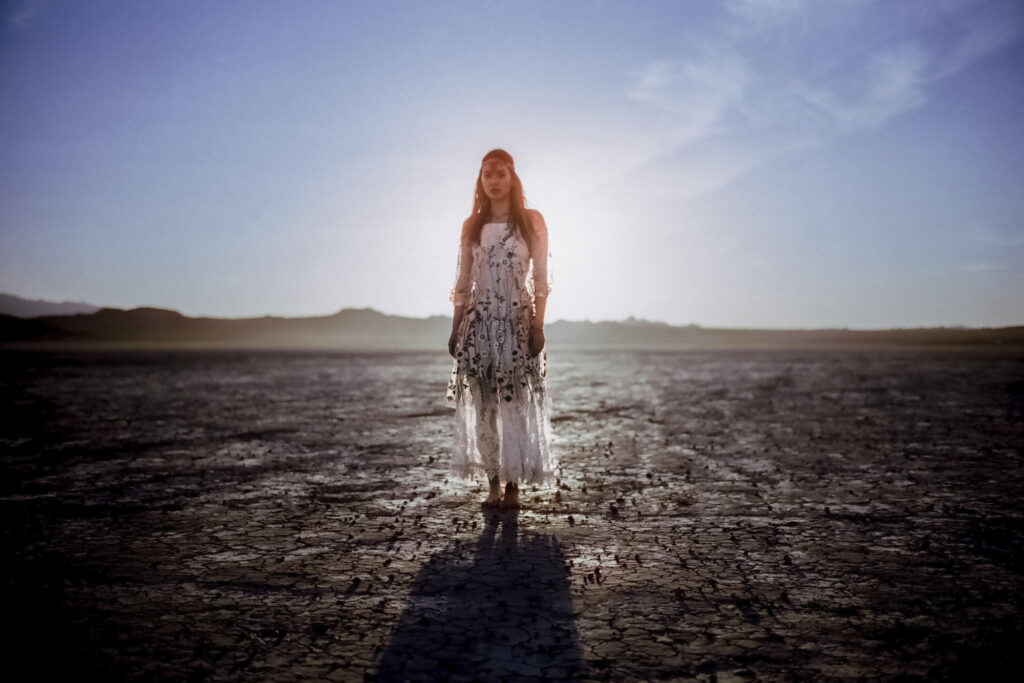
So we realize that lack of awareness may be more dangerous for Indigenous people and poor people than maybe racism. Because a lot of times people think it’s racism, ‘They don’t give a shit about us.’ Or people will tell you, ‘They don’t give a shit because we don’t have no money.’ But a lot of times a lot of people just aren’t aware. Like you weren’t aware, right?
So we said, let’s try to make something that brings people in. Without us having to say, ‘You’re a piece of shit, by the way. You and all the other white people are the problem.’ That’s not the case. At Seeing Red 6Nations, we don’t see color, we see people. And so I’m glad you got that effect because that is the desired effect that we’re after.
Layla’s journey to becoming an activist is such a great framing for the story. How did you end up getting connected with her?
I knew her brother, Logan Staats, who’s in the film. Logan is a singer and I was in the music business my whole life. So Logan would talk to me about his music, and through Logan I met his sister. What happened was, she’s from Six Nations and our company is on Six Nations. And she made her own water doc, a short doc, all on her own. Directed it, wrote it, shot it, really grassroots. We saw it and we realized that she had things to deal with, with water, in her family.
“Let’s just talk to regular people, see what’s going on. You see a family that lives in a house where they have a Geiger counter, and their mailbox is radioactive, and it’s in America, in a first world country. […] We’re showing people and letting them decide if this is acceptable or not.”
Stevie Salas
The hardest part, though, was Layla wanted to be an inspiration to young people and other Native people especially. So she wanted to be like, ‘I am strong. You can follow me. I can show you that there’s strong women out there for you to look up to.’ And I was like, No, no, no. You cannot do that. What you need to do is be real and let those people say, ‘Whoa, she’s just like me!’ So it was hard for her because that meant she really had to bare her soul and really had to expose herself and go through hell. And she was already kind of going through it anyways. She just had to let us see it. It was very brave of her.
Was there a moment when it all clicked and you felt like maybe we have something special here?
No, no. We were scared shitless all the time. We didn’t know what we had. James Burns kept saying to me, because this is really his first feature doc as a director, ‘I just hope I didn’t make a shit film.’ Because you never know.

Rumble is the film that everyone talks about. I love Rumble. But when we made Rumble, we turned it into Sundance and we didn’t think it was going to get in. The rough cut was three hours. And it comes out and it wins Sundance. You have no idea it was going to change written history. And it’s the same with this. You just don’t know.
You do so many interesting things here aesthetically, with the animated sequences, VFX. I’ve seen this described as a ‘hybrid documentary film.’ Why was it important to you to experiment with all these different styles?
We just didn’t want to do a talking heads doc. We could have. I talked to David Suzuki and his people, people like that. Originally, we were going to have David in there [saying] ‘The reason that the water is this way is because the population explosion of blah, blah, blah’ and all these facts and things.
“We’re just trying to say, ‘look, this is what’s going on, and it’s real and it’s right here. What do you want to do about it?'”
Stevie Salas
And we thought, let’s get away from that. Let’s just talk to regular people, see what’s going on. You see a family that lives in a house where they have a Geiger counter, and their mailbox is radioactive, and it’s in America, in a first world country. You’re like, ‘what the fuck,’ right? We’re showing people and letting them decide if this is acceptable or not.
I think this film makes a really compelling case for activism, because of that. Not just for these specific issues facing these specific communities, but also more generally, as a way of life.
Awareness will create that. Like I said, everything’s designed mostly just to get everybody pissed off. And we’re not trying to do that. We’re just trying to say, look, this is what’s going on, and it’s real and it’s right here. What do you want to do about it? This whole thing started because my family and I were in Hawaii, and my buddy who I grew up with in San Diego was working for a water charity.
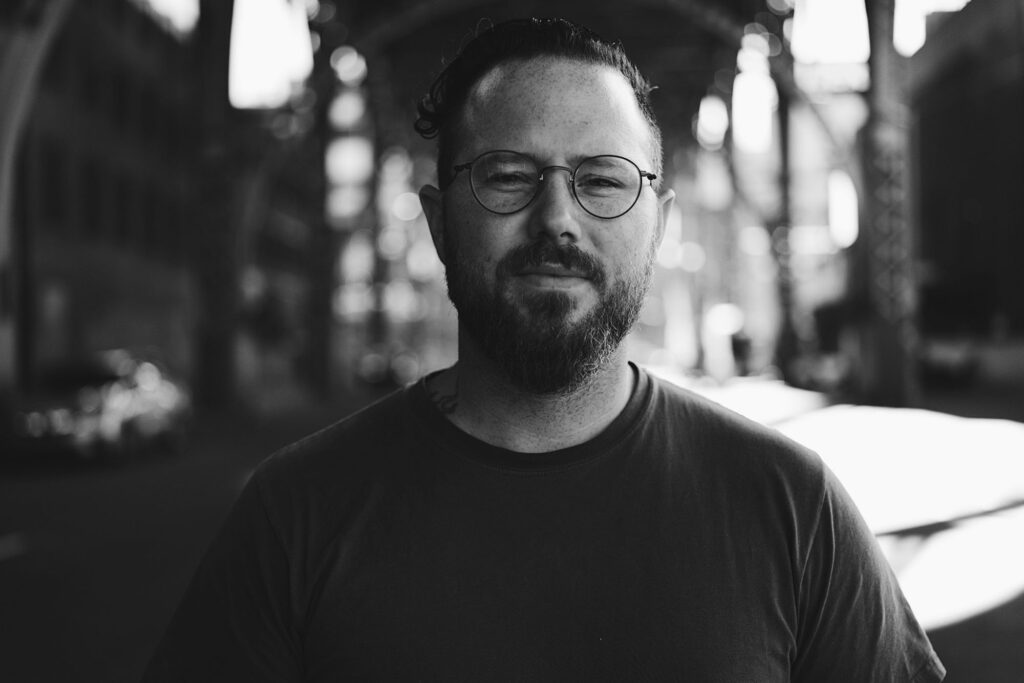
So I flew to Fiji and went into the bush with him, into these grass hut villages that look like you’re back a hundred years in time. And I learned so much about how just two weeks of your water being clear, all these kids, the dysentery was gone and their sores were going away. Just from clean water, not from any medicine at all. And I said to him, Darrel, why am I three-quarters of the way around the world right now doing this when we could be doing this back home? And he looked at me, like what are you talking about? He called me up two weeks later and goes, ‘I found 1,100 communities in North America on boil alerts.’
So he and I got into it [with] my partner, Bryan Porter. We funded it ourselves and started going into Indian reservations, flying in on float planes and starting just changing the water systems out, on our own. We weren’t waiting for the government, because they’d be like, ‘We need a $20 million system to do it.’ And we go, ‘Well, we’re going to do something for $25 grand here that’s going to change everyone’s life, right now.’
“I found that was really the look of the film. We wanted this constant beauty, gorgeous scenery, and to understand that everything isn’t what it seems.”
Stevie Salas
But one thing I noticed was, I’d fly into these territories north of Thunder Bay, and it would be like flying into something that you would regard as paradise. Trees and animals, and these lakes… Gorgeous. I mean, beautiful. Not knowing that that water would kill you. And I’m not kidding. I’m not exaggerating. I talked to people that were like, ‘We haven’t been in the water in 42 years. We don’t swim in it.’ But then they had to drink it.
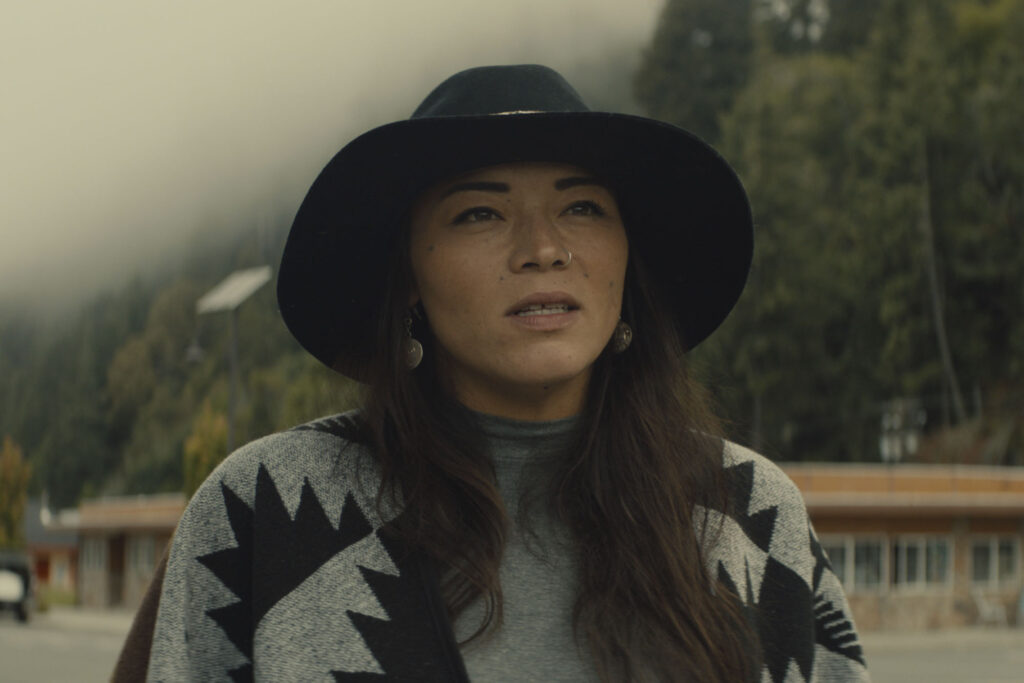
So James and I talked a ton about [how] we need to show this insane beauty. Because you’ve seen the garbage and the mud and the sludge and all the shit that looks like death. But this looks like paradise. And I found that was really the look of the film. We wanted this constant beauty, gorgeous scenery, and to understand that everything isn’t what it seems.
How did you decide which communities you were going to visit?
We visited tons. How we decided which ones were going to be in the film was different. James was really smart about this, because he realized that we found a few of the worst [disasters in North America]. Neskantaga has been under the longest boil alert in Canadian history. Grassy Narrows is the worst disaster of mercury [poisoning], maybe in the world. I don’t know. But definitely in Canada. All the uranium in Navajo country, it’s the worst ever and no one even knows about it. And what’s ironic about that one is, we all went and saw Oppenheimer not too long ago and it celebrates this great guy—and I think he is a great guy. I think he’s a hero and I think he’s a genius. But nobody talked about the cleanup. Here we are all these years later and this is what you’re seeing. Everything’s radioactive as shit down there. And nobody bothers to have to think about that. They thought about the victory, and then let’s piss off.
“Everyone at every place at one time said, ‘You know what? This is my home, and this land is the land I love. And it’s beautiful to me.'”
Stevie Salas
In Oppenheimer, he says about Los Alamos, ‘Let’s break it down.’ And the chiefs of staff are like, ‘Are you crazy? We’re going to keep developing. What would you do with the land?’ He says, ‘I want to give it back to the Indians.’ Well, they got it back now. And it’s bad. I mean, when you got to have a Geiger counter in your yard… That’s real. This is not some exaggeration.
The stories are so heartbreaking. Grassy Narrows in particular.
Brutal.
That section just wrecked me. Were there any days that were particularly tough for you? I’d imagine it’s the type of thing that sticks with you after you’re done filming for the day.
I think it was really rough on Layla. I think Layla had the brunt of it. But James is super sensitive. I’m a little insensitive, I think. I just grew up in a way where things just bounce off me. I’m used to it, you know? But when I watch back the cut and [Grassy Narrows resident Nora Sneaky] says, ‘I know that this is probably going to cut my life short.’ And she’s just accepted it… and, by the way, that girl’s passed away now.
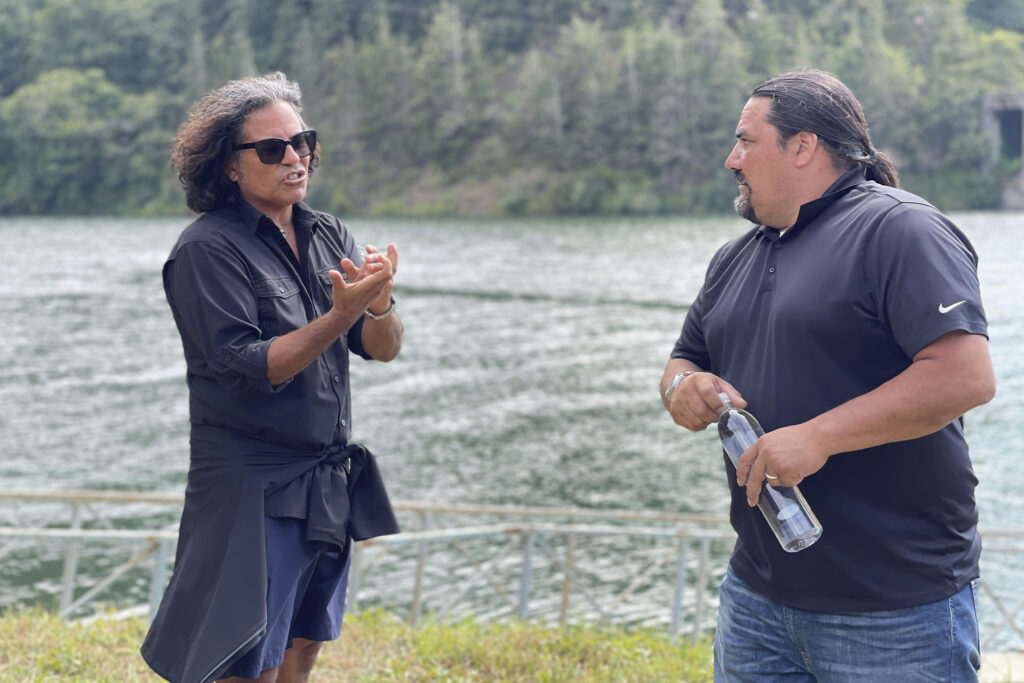
I saw that. Such a tragic story.
What really grabbed me though, is on the other side, everyone at every place at one time said, ‘You know what? This is my home, and this land is the land I love. And it’s beautiful to me.’ Even though it’s killing them all.
That was one of the things that really struck me. We’re used to seeing the physical harm that comes from not having access to clean water, but not necessarily the psychological trauma that comes with living through these disasters, and growing up in these places.
That’s all James Burns. James Burns is an incredible storyteller. You know, James had a rough life growing up. He was in a men’s prison when he was really young. He had it really rough growing up. So he really understands and sees these things on a whole ‘nother level. And capturing that is the brilliance of James Burns.
“We try to surround ourselves with the best people possible, where we’re not the smartest guys in the room. Guys like James Burns and people that can teach us and help us be better. We work together and I get better. He gets better.”
Stevie Salas
I want to make sure he gets the credit, because I’m the guy who played with Mick Jagger and all this stuff, so everyone’s putting my picture in the papers. But really, I was a Padawan trying to learn how to be a director. And James Burns was Obi-Wan for me.
We had a thing where people would say, ‘We need to tell our own stories, and we need to do all this stuff ourselves.’ But at Seeing Red 6Nations, my partner Bryan Porter and I, we believe that collaboration is the key to growth. And we try to surround ourselves with the best people possible, where we’re not the smartest guys in the room. Guys like James Burns and people that can teach us and help us be better. We work together and I get better. He gets better. And I don’t care what colour his skin is. He is a human being, and it’s a human experience that we’re filming. It’s an Indigenous experience, yes. But it’s also a human experience.
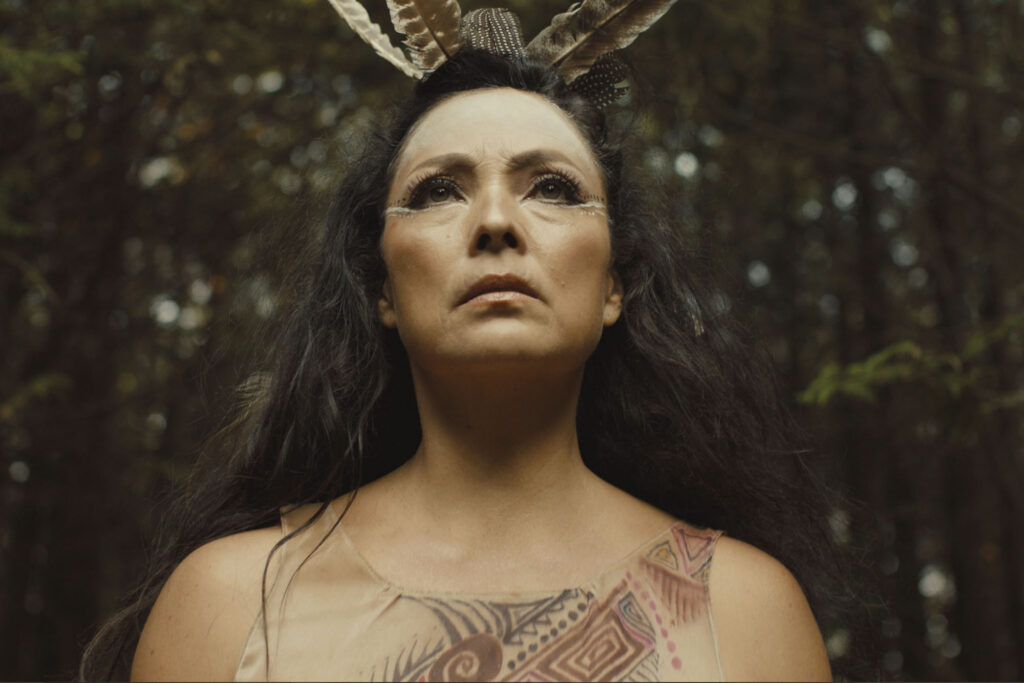
There are some pretty intense moments in here. The protests at Wet’suwet’en, especially. What was it like to be there on the ground filming?
I didn’t go on that shoot when they went up to Wet’suwet’en. We were up there a couple of different times. What we used, though, was really intense. And it was the people up there that really invited Layla in. Layla became in with them, and they shared a lot of their [footage] with us. And that’s what really made it work. They really trusted Layla and they sort of adopted her. That’s when she no longer could sit on the outside and just talk to people about it. She had to get involved.
You mentioned earlier being struck by the resilience of these communities. How tricky was it finding that balance between shining a light on the tragedy of these situations, but also making sure you’re celebrating that resilience as well?
There’s two things we’re doing. One is we don’t want to make a hate film. I don’t want to make that film. I used to talk about this in Rumble. I don’t want to say, ‘Hey, you fucking took our land, you took our music. You fucked us again.’ I don’t want to make that kind of film. I just want to show people what’s going on.
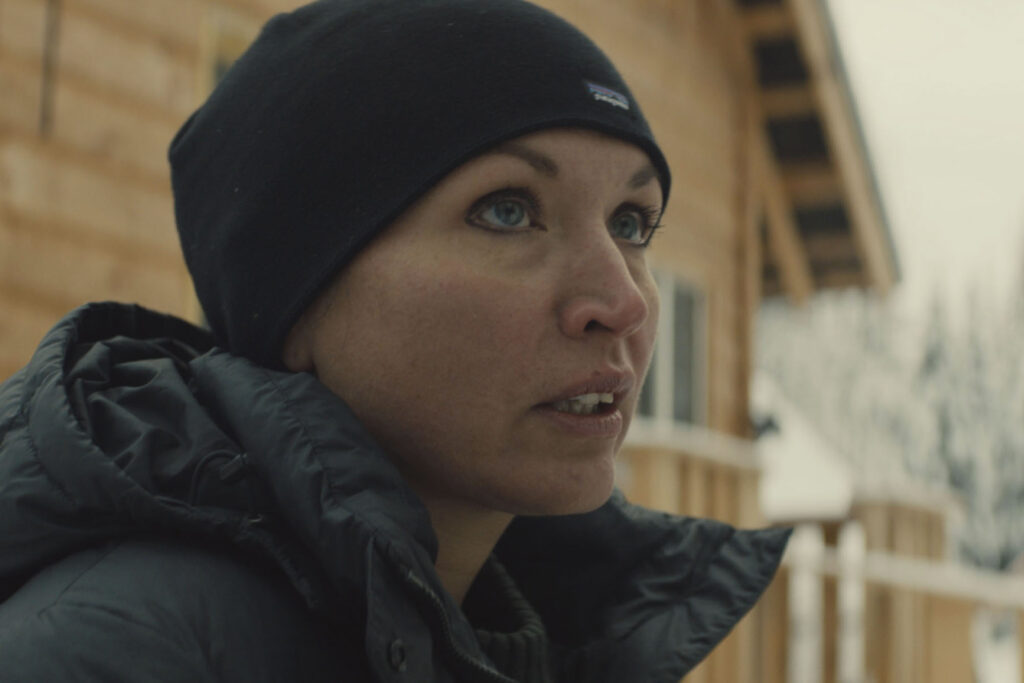
James and I talked about this a lot. We wanted Layla’s journey at the end to realize that she could just go back with a small group of people and just be grassroots and do her thing. That everybody can do a little bit. And everybody doing a little bit can add up to a lot. That’s why we wanted Layla at the end, she could come home and realize that you don’t have to be Wonder Woman. It’s overwhelming to think that you have to do that. You can just start. And that is important in itself.
What does it mean to you to have this film premiering at TIFF, then? To have this platform to be able to tell this very important story?
My first film got into Sundance and won Sundance, and I didn’t think nothing of it. But then I watched what happened after it won Sundance. My whole world changed. I didn’t even go to Sundance because I thought we’re never going to get in. So I went and booked a tour and was playing concerts in Japan, and we won. And when I got home, it was a different world for me.
“We don’t want to be known as the spokespeople for water. We’re not David Suzuki. We just wanted to show some people what’s going on out there and let them come up with their own ideas. We’re filmmakers. We just want to say, here’s a window, look into it.”
Stevie Salas
Then the second film, The Water Walker, got into TIFF, but it was during the pandemic. So it was kind of anticlimactic, but very important, to give it credibility. And coming into TIFF now gives us incredible credibility. I’m a little nervous. James and I both are. We don’t want to be known as the spokespeople for water. We’re not David Suzuki. We just wanted to show some people what’s going on out there and let them come up with their own ideas. We’re filmmakers. We just want to say, here’s a window, look into it.
I’m afraid everyone’s going to think we’re experts on identity, which we’re not. We’re not experts on water. We just saw what we saw. I went and did some stuff myself. Went and got my hands dirty myself. So I hope that everyone doesn’t come to me asking, because I’m not the magic man. [Laughs.] We don’t know what we don’t know. What you didn’t know before you saw the film, we didn’t know that either until we made the film.
Feature image courtesy of Andrew Maso.

